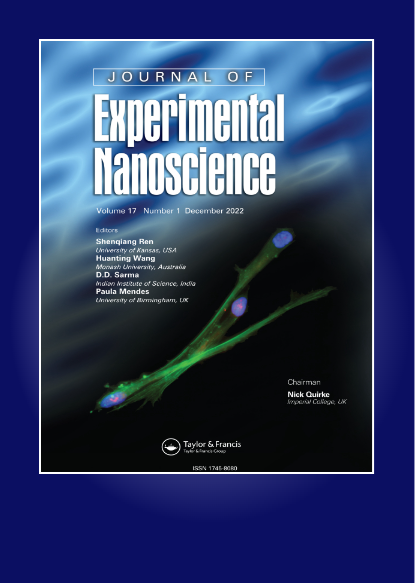Novel controlled-release polylactic-co-glycolic acid (PLGA) nanoparticles for sodium thiosulphate, a hydrogen sulphide donor, retains pro-angiogenic potential of hydrogen sulphide
IF 2.8
4区 材料科学
Q2 CHEMISTRY, MULTIDISCIPLINARY
引用次数: 3
Abstract
Abstract Hydrogen sulphide (H2S) is an endogenous gaseous signalling molecule observing cardioprotective qualities in various experimental models. However, its therapeutic application is limited due to rapid release in vivo and potential toxicity. Controlled-release nanoparticles (NPs), such as polylactic-co-glycolic acid (PLGA) NPs entrapping H2S compounds may address these issues. PLGA NPs’ encapsulating sodium thiosulphate (STS), a H2S donor, were prepared by emulsification and sonication-solvent evaporation in polyvinyl alcohol (PVA). Sonication time was varied between 15 and 45 s and PVA concentration varied between 0.3 and 0.7% w/v. NPs were characterised, cellular uptake, H2S generation and encapsulated STS angiogenic potential was explored. An increase in sonication time as well as PVA concentration decreased NPs size resulting in an increase in STS release kinetics and cellular uptake over 24 h. Encapsulated STS gave a controlled release of H2S over 24 h whereas non-encapsulated STS peaked at 2 h. Finally, we observed entrapped STS maintained pro-angiogenic potential. PLGA NPs are a promising controlled-release delivery system with potential to offer sustained H2S levels. Results of this study demonstrate formulation of STS-loaded PLGA NPs provides a controlled-release of STS and therefore H2S. NPs are internalised into cells and critically, PLGA NPs are able to maintain the pro-angiogenic potential of H2S.用于硫化氢供体硫代硫酸钠的新型控释聚乳酸-乙醇酸(PLGA)纳米颗粒保留了硫化氢的促血管生成潜力
摘要硫化氢(H2S)是一种内源性气体信号分子,在各种实验模型中观察心脏保护作用。然而,由于其体内快速释放和潜在毒性,其治疗应用受到限制。控制释放纳米颗粒(NP),例如包埋H2S化合物的聚乳酸-乙醇酸(PLGA)NP,可以解决这些问题。通过在聚乙烯醇(PVA)中乳化和超声溶剂蒸发制备了包封H2S供体硫代硫酸钠(STS)的PLGA纳米粒子。超声时间在15到45之间变化 s和PVA浓度在0.3%-0.7%w/v之间变化。对NP进行了表征,对细胞摄取、H2S生成和包裹的STS血管生成潜力进行了探索。超声处理时间和PVA浓度的增加降低了NP的尺寸,导致STS释放动力学和细胞摄取增加超过24 h.封装的STS可在24小时内控制H2S的释放 h,而未封装的STS在2时达到峰值 h.最后,我们观察到包埋的STS保持了促血管生成的潜力。PLGA NPs是一种很有前途的控释递送系统,有可能提供持续的H2S水平。本研究的结果表明,STS负载的PLGA NP的制剂提供了STS的控释,从而提供了H2S的控释。NP被内化到细胞中,关键的是,PLGA NP能够维持H2S的促血管生成潜力。
本文章由计算机程序翻译,如有差异,请以英文原文为准。
求助全文
约1分钟内获得全文
求助全文
来源期刊

Journal of Experimental Nanoscience
工程技术-材料科学:综合
CiteScore
4.10
自引率
25.00%
发文量
39
审稿时长
6.5 months
期刊介绍:
Journal of Experimental Nanoscience, an international and multidisciplinary journal, provides a showcase for advances in the experimental sciences underlying nanotechnology and nanomaterials.
The journal exists to bring together the most significant papers making original contributions to nanoscience in a range of fields including biology and biochemistry, physics, chemistry, chemical, electrical and mechanical engineering, materials, pharmaceuticals and medicine. The aim is to provide a forum in which cross fertilization between application areas, methodologies, disciplines, as well as academic and industrial researchers can take place and new developments can be encouraged.
 求助内容:
求助内容: 应助结果提醒方式:
应助结果提醒方式:


